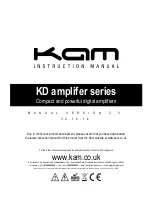
TRP1000-4450 Troposcatter C-Band Outdoor Amplifier
Revision 0
Serial-based Remote Product Management
5–7
MN-TRP1000-OD
2. From Target to Controller, the only permitted values are:
Symbol
Definition
=
(ASCII code 61)
The ‘=’ code is used in two ways:
a. If the controller sends a query code to a target, (EXAMPLE: MUT?, meaning ‘is mute enabled or disabled?’), the target responds
with MUT=x, where x represents the frequency in question, “1” being ‘enabled’ and “0” being ‘disabled’.
b. If the controller sends an instruction to set a parameter to a particular value, and, providing the value sent is valid, the target will
acknowledge the message by replying with MUT=(with no message arguments).
?
(ASCII code 63)
If the controller sends an instruction to set a parameter to a particular value, and, if the value sent is not valid, the target will acknowledge
the message by replying (for example) with MUT? (with no message arguments). This indicates that there was an error in the message
sent by the controller.
!
(ASCII code 33)
If the controller sends an instruction code that the target does not recognize, the target will acknowledge the message by echoing the
invalid instruction, followed by the ! character. (EXAMPLE: XYZ!)
*
(ASCII code 42)
If the controller sends an instruction to set a parameter to a particular value, and, if the value sent in the argument is valid, however, if
the target is in the wrong mode, the modulator will not permit that particular parameter to be changed at this time, the target will
acknowledge the message by replying, (for example), with MUT* (with no message arguments).
#
(ASCI code 35)
If the controller sends an instruction code that the target cannot currently perform because of hardware resource issues, the target will
acknowledge the message by echoing the invalid instruction followed by the # character. This response can only occur if the operator
sends two or more ‘hardware configuration’ type commands without allowing adequate time between commands for the hardware to
be figured. For example, if the operator issues commands to change both the frequency and the attenuation with less than 100
milliseconds between commands, and if the response # is returned, then the command was not accepted and the operator must
resend the command.
5.3.4.6
Optional Message Arguments
Arguments are not required for all messages. Arguments are ASCII codes for any printable character.
















































